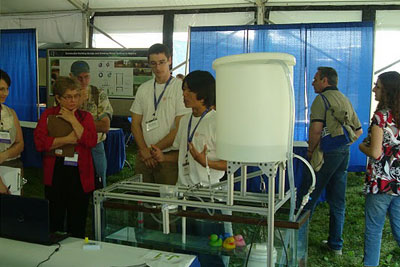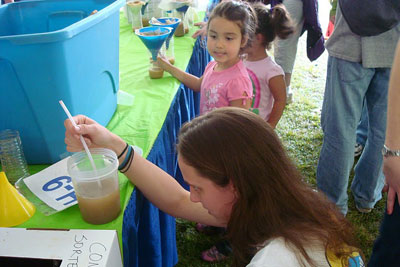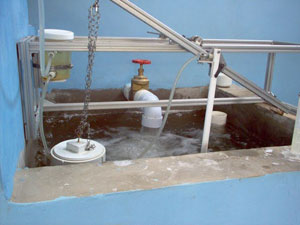Student project wins $75,000 for drinking water technology
By Anne Ju



A $75,000 prize garnered by the AguaClara project team will help the student engineers keep innovating new ways to bring safe drinking water to communities in Honduras.
Members of AguaClara's dose controller research group won the cash prize from the Environmental Protection Agency's P3 Competition (People, Prosperity and the Planet), after showcasing their technology at the National Sustainable Design Expo on the National Mall in Washington, D.C., April 24 and 25.
AguaClara is a five-year-old student group that researches and designs non-electric municipal water treatment plants, so far serving 15,000 Hondurans with clean drinking water. The Honduran nonprofit Agua Para El Pueblo has built most of the AguaClara-designed plants.
The dose controller team designed the part of the water plant that controls the amount of a chemical coagulant being added to untreated water. Their semi-automated controller allows the plant operator to easily set the correct amount of chemical flowing into the plant.
The money will support new, innovative technologies created by the growing 55-member team, said leader Monroe Weber-Shirk, senior lecturer in civil and environmental engineering.
In particular, AguaClara is expanding to include a filtration research team. In past AguaClara designs, the plants have only included flocculation, which is the addition of chemicals to make impurities form clumps; sedimentation, which is the removal of impurities in a separate tank; and disinfection with chlorine. AguaClara would like to add filtration to further purify the water. This is a challenge because current filtration technologies are too costly and are not sustainable for resource-poor communities. In the United States and other developing countries, filtration is a standard step in water treatment.
"What this grant allows us to do is build prototypes and test them," explained Weber-Shirk.
The money also will support ongoing research to improve existing AguaClara technologies, said Karen Swetland, a first-year Ph.D. student studying flocculation.
For example, more testing is needed on the chemical dose controller to scale it to larger plants, Swetland said.
"Conceptually we've done the research and made a working model, but there are a few more steps before it's done," she said. "The grant will provide us with funds to do that in a timely manner."
AguaClara has designed five plants in Honduras, with more in the pipeline, Weber-Shirk said. Among AguaClara's larger goals is to make the process from design to implementation as seamless as possible.
One step toward that goal is the design team's Web-based automated design tool. This allows engineers to input how much water would flow into a plant. The tool then calculates all the plant dimensions and creates a 3-D drawing that can be used by local engineers to build the facility.
Get Cornell news delivered right to your inbox.
Subscribe